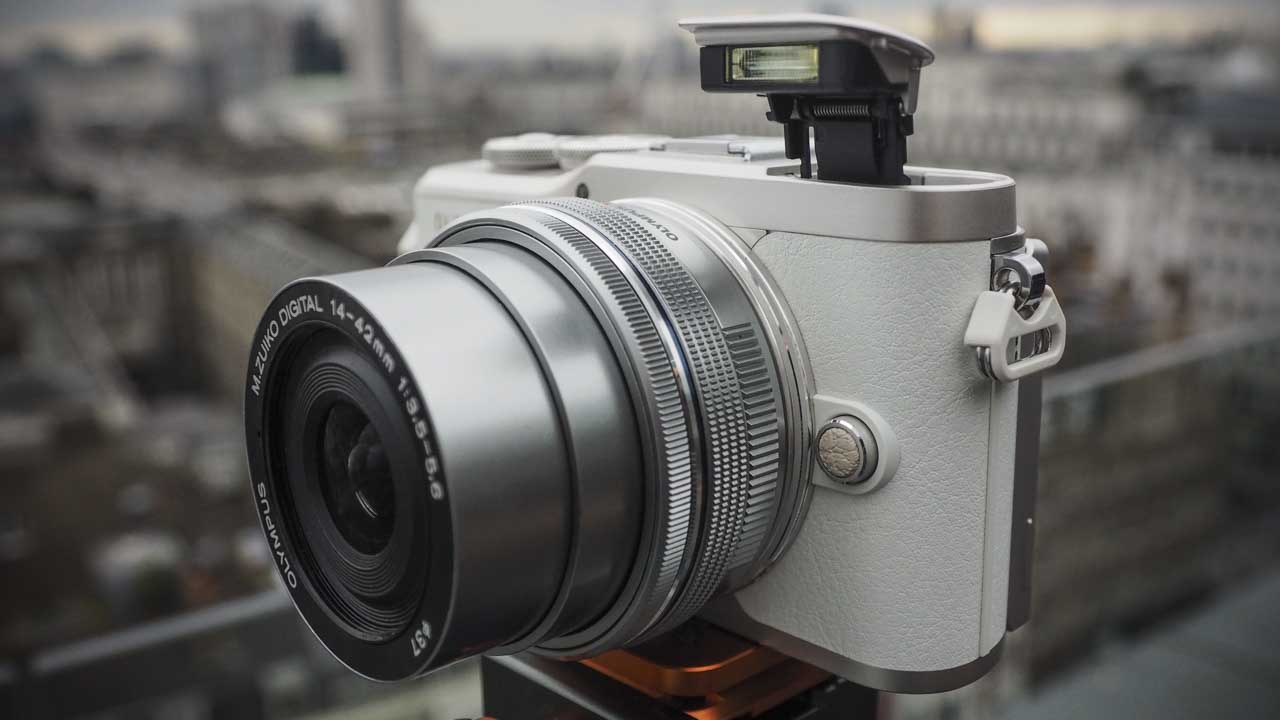What is the Olympus PEN E-PL9?
Olympus was the first manufacturer to launch a retro-inspired digital camera with the original PEN E-P1 back in 2010. Few were sure at the time about making the leap from SLR to this new compact approach, but now in 2018 many are making that leap, (although not all to Olympus) and there’s a massive choice out there.
The E-PL series has done well in the past with the vlogger, blogger and influencer set because of its small size, cool retro looks, fun range of Art filters and great image quality.
Like the rest of the Olympus PEN series, the E-PL9 is a mirrorless Micro Four Thirds camera, which is aimed at photographers who have outgrown their smartphones or aspiring vloggers looking for a simple-to-use, good-quality camera.
The PEN E-PL9 is the entry-level model in Olympus’s range, and though it shares the same 16-megapixel Micro Four Thirds sensor with the PEN E-PL8, it does offer some modest upgrades over its predecessor.
The Olympus PEN E-PL9 price tag is £579.99 for the body only, or £649.99 when you upgrade to the 14-42mm f/3.5-5.6 power zoom lens kit. Which is a great little lens, by the way, and if you are purchasing the E-PL9, it’s worth getting the kit.
The PEN E-PL9 comes in white, black and brown.
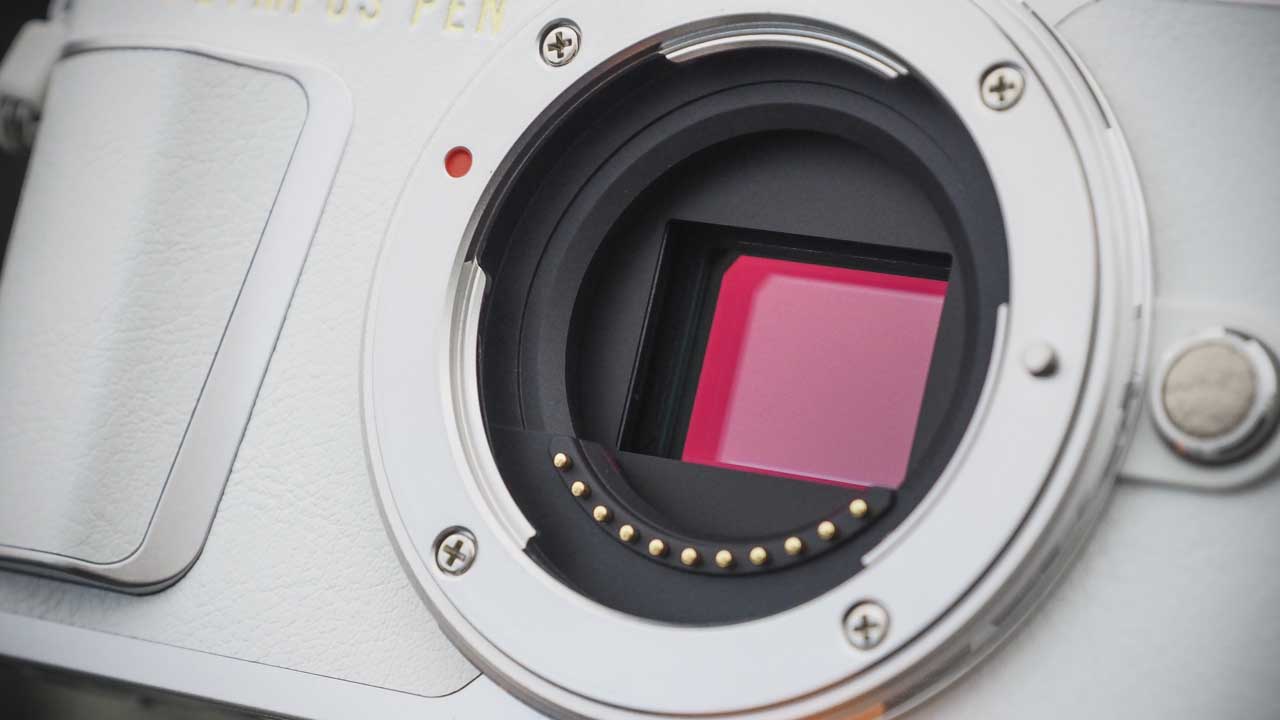
Features & Specifications
What’s new with the Olympus PEN E-PL9 vs the PEN E-PL8? To start, there’s now 4K video recording at 30, 25 and 24p, and Full HD video can be recorded at 60p.
To go along with that 4K video recording is a vlogger-friendly 3-inch, 1,040k-dot touchscreen that articulates 80 degrees up or 180 degrees down on its bracket for shooting selfies and vlogs.
Video is an essential feature in 2018, especially for vloggers, so the E-PL9’s 4K at 30fps is quite impressive for a camera of this size and price.
There’s also a new High Speed Video mode for capturing slow-motion movies, a Clips video mode for capturing 4sec movies and you can also add the camera’s Art Filters and a wide range of other effects to your videos.
You’ll also find the addition of Bluetooth connectivity (a first for Olympus cameras), new art filters, more AF points and Oympus’s new TruePic VIII image processor, inherited from the company’s flagship E-M1 Mark II.
As well as popular Olympus stalwarts Live Composite and Live Bulb modes, the E-PL9 also adds new Focus Bracketing (shoot up to 999 frames at different focus differentials, which you can merge into a focus stack in your photo editing software), Sweep Panorama, HDR Backlight and Keystone Compensation (for correcting converging lines in-camera) modes.
These are included in a new Advance Photo (AP) mode on the E-PL9’s shooting mode dial.
Let’s go back to that 3-inch touchscreen because that might have the most appeal to smartphone users and those looking to make vlogs. Like other Olympus cameras the touchscreen is articulated, but with the E-PL9 you have the option when pulling the screen out to flip it down 180 degrees.
This is handy for selfies but it’s also quite useful for shooting vlogs. When you flip the screen down the camera’s direct controls become accessible. You’ll see on-screen buttons to stop and start recording, change exposure settings and more.
Like the E-PL8 the new PEN E-PL9 uses a 3-axis image stabilisation system to keep your stills and video sharp. You’ll also find 121 contrast detection AF points, compared to 81 on the E-PL8.
The E-PL9 offers mechanical and electronic shutters, providing maximum shutter speeds of 1/4000sec and 1/16,000sec, respectively. The electronic shutter can also be quickly accessed via the new AP mode on the camera’s top plate.
Burst shooting is 8.6fps, which is pretty high for a camera at this end of the market. Switch to the electronic shutter, and then suddenly you have 14fps continuous shooting.
Build Quality
Size wise, the E-PL9 is pretty compact, even when you compare it against the Olympus OM-D E-M5 Mark II (which always surprises me by how small it is). It can easily slip into a coat pocket or hoodie and is very portable
Despite the size, it’s well-weighted and although small in the hand, is perfectly workable and comfortable to use.
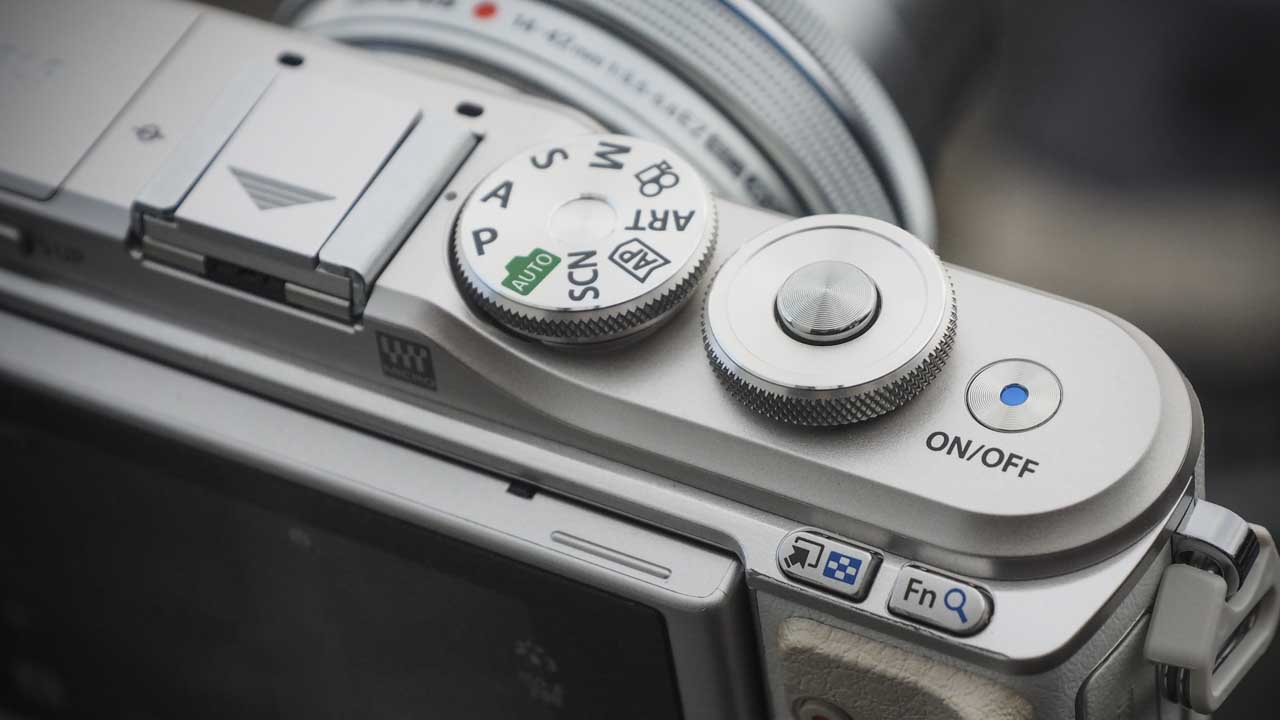
The top plate
The top dial and button layout is just right. Your main mode dial features the standard exposure modes, Auto, Scene and Video modes, then the Art Filters and the E-PL9’s new AP, or Advanced Photo mode. Adjacen is a dial for adjusting shutter speed, aperture and other exposure settings. The shutter button sits in the centre of this dial.
I quite like that the AP option has been included on the mode dial, giving direct access to creative capture techniques such as Live Composite and HDR. Many experienced photographers often struggle to find these clever modes on some Olympus cameras, so it’s great that they are easier to find on the E-PL9 (and the OM-D E-M10 III).
On the front is a faux leather grip that sits well in the hand. And on the side is a plastic compartment housing the USB and HDMI ports. The body is all plastic, but its solid and feels premium. For an entry-level model, it really does feel like a luxury, high-end product.
The camera back
On the back of the PEN E-PL9 you’ll see the red one-touch video record button situated within a thumb grip. Below this are the Menu and Info buttons. Below these are your four-way controller where you can adjust flash settings, drive mode, AF mode and exposure compensation.
At the bottom of the camera back are the delete and playback buttons. All of the buttons and dials here are sufficiently chunky and feel like they’re built to last.
One small pet peeve: the one-touch video record button is house within the thumb grip, and I did press this accidentally a few times. Not a huge deal, but it’s something to watch for.
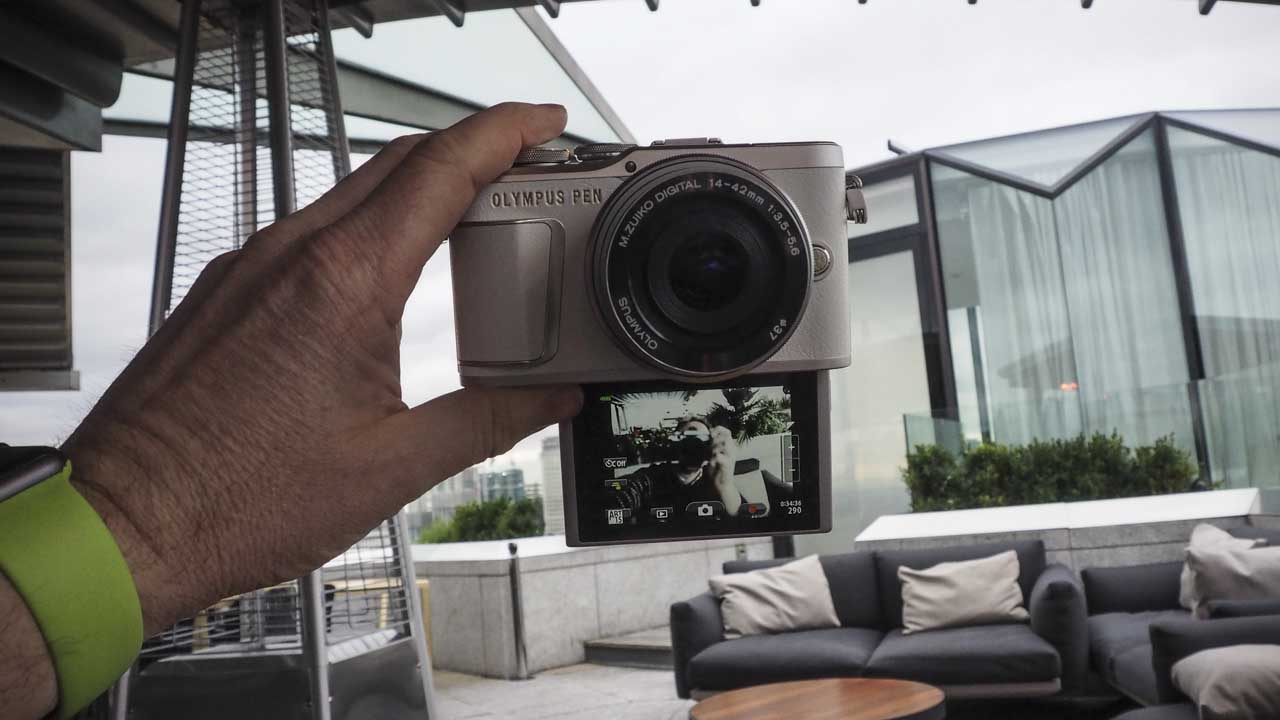
The touchscreen
The 3-inch touchscreen on the back of the E-PL9 is one of the camera’s standout features. What’s new here is that while it articulates 80 degrees up like other Olympus screens, it’s mounted on a new bracket that allows you to flip it down 180 degrees for self-portraits and vlogging.
When you flip it down the screen goes into a self-portrait mode by default. Face tracking AF locks you in focus instantly all of your exposure controls and record button are situated around the perimeter of the screen.
It’s very easy and convenient; however, as I’ll explain later, a bugbear of mine is that when the screen flips down it comes to rest just before the screw thread for your tripod head or grip. Which means you can’t really use a grip when filming yourself. It’s not the end of the world, but a screen that articulates from the side like Panasonic’s or Canon’s would eliminate that conflict.
Overall, though, the screen sits firm on its bracket and is easy to retract and fold back again.
The touchscreen also sees an overhaul in resolution over the E-PL8’s and offers a new smartphone-style interface that enables you to double-tap the thumbnail with the look you like, and then the camera will sort out the settings.
In another nod to smartphones, the PEN E-PL9 offers WiFi and now BlueTooth connectivity (a first for Olympus), which makes for easier image transfer to your mobile device.
There is also Olympus’s smartphone app that enables you to take control of the camera as well as share images.
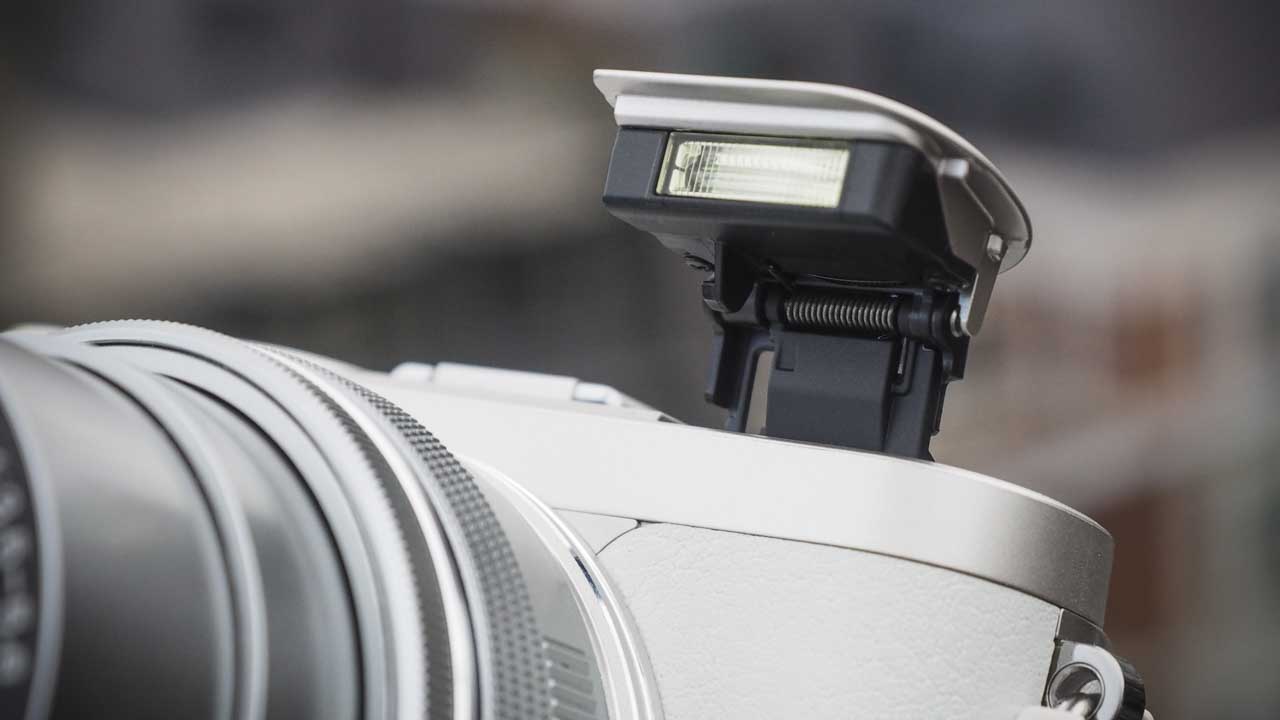
Finally, there is also the addition of a pop-up flash, which is great for adding a little fill light for more attractive selfies. I’m surprised the flash doesn’t double as a video lamp, but maybe that’s something for the E-PL10 or E-PLX.
Where’s the accessory port?
But in a somewhat puzzling move, Olympus has removed the accessory port that was on the E-PL8 and previous versions before that.
The accessory port used to sit just below the hot shoe, and you could plug in a number of accessories, such as a viewfinder or an external microphone. This has now gone, and we confirmed with Olympus that there is indeed no way to plug in an external mic on the PEN E-PL9.
Considering this is a camera aimed at vloggers, that could seem like a misguided move. But Olympus did say it enhanced the performance of the built-in microphone in the E-PL9. So we’ve put this to the test.
Performance
For me, the Olympus E-PL9 has been one of those few cameras where my first impressions have changed after long-term use. Like that concept album by your favourite band, it’s been a grower of a camera that’s ultimately won me over in the time that I’ve had it.
As an entry-level camera the E-PL9 offers an impressive set of features in a very portable body design, that’s incredibly easy to use. If you’re making the leap to your first serious camera and are worried about not knowing what you’re doing: don’t worry. The PEN E-PL9 is incredibly intuitive. Read the manual to get a feel for Olympus’s menu system, and once you crack that you’ll be amazed at how much is on offer here.
But my initial thought was that this is a tale of two cameras: a great stills camera but a disappointing vlogging camera due to some curious design decisions. I’d even resigned myself to leaving the E-PL8 on our best vlogging cameras post and not replacing it with the E-PL9.
Vlogging capability
Why was I initially doubting on its vlogging bona fides? Two reason: 1. When you flip down the touchscreen into selfie mode your only option is to hand hold the camera. If you mount a grip, the LCD screen doesn’t fully extend, depending on how wide your grip is, thus not enabling the selfie mode. And the grip blocks most of the screen anyway.
And then 2. Olympus removed the accessory port with the PEN E-PL9, meaning you now cannot plug in Olympus’s external microphone to enhance audio. But then I did my vlogging tests…
And you know what, the built-in mic on the E-PL9 is really fantastic. I tested it at the beach with the tide behind me, and it picked up my voice amazingly and dampened the sound of the tide.
This made me wonder if Olympus had tweaked the internal mic. I asked our friends at Olympus and they said some enhancements were made, but didn’t specify what exactly.
So I put the camera through some more tests. I set it up in my garden walked around it, seeing if my voice dropped off in any particular areas. It felt like Olympus tweaked the E-PL9’s mic to be less omnidirectional and instead favour front-directional sound. This indeed seems to be the case, and is great news for vloggers.
I then compared the camera’s built-in mic to my OM-D E-M10 Mark II in the same walk-around test, and the difference is stark. The E-PL9’s mic picks up a much fuller, warmer sound.
So audio-wise, I think the PEN E-PL9 is fantastic for beginner vloggers. The internal mic is so good it can accommodate for your mistakes, whether it’s positioning errors or using it next to loud subjects. But the fact that attaching a grip blocks the LCD’s functions is still a big bugbear of mine.
Now, you can still film a vlog with the E-PL9 mounted on a tripod or grip, but you’ll need to be behind the camera to dial in your settings via the menu, or press the one-touch movie record button. Which means your clip will begin with you walking into the frame and then end with you getting up to stop recording.
You can edit these out pretty easily. But if you’re a beginner who is new to vlogging, or if you just want to film your holiday or moments with your child, you probably don’t have video editing software nor the time or wherewithal to use it.
You can also trigger the PEN E-PL9 remotely with Olympus’s Image Share app, which is another option. But then you’ll be fiddling with your phone and entering passcodes, which you might not want to do.
Image Quality
As for image quality, the Olympus PEN E-PL9 is just outstanding. The E-PL9 produces well-balanced exposures with plenty of detail and beautiful colour. Shooting during some rare heatwaves here in the eternal winter of the UK I was impressed at its ability to pick out quite a bit of detail in shadow areas and balance those with highlight detail in the skies.
Tones are natural and vibrant, as well. I was using images straight from the camera without the need for editing. And if you want to add some creative editing flair, the E-PL9’s wide range of art filters are subtle and classic, with some nice new options such as this Bleach Bypass effect.
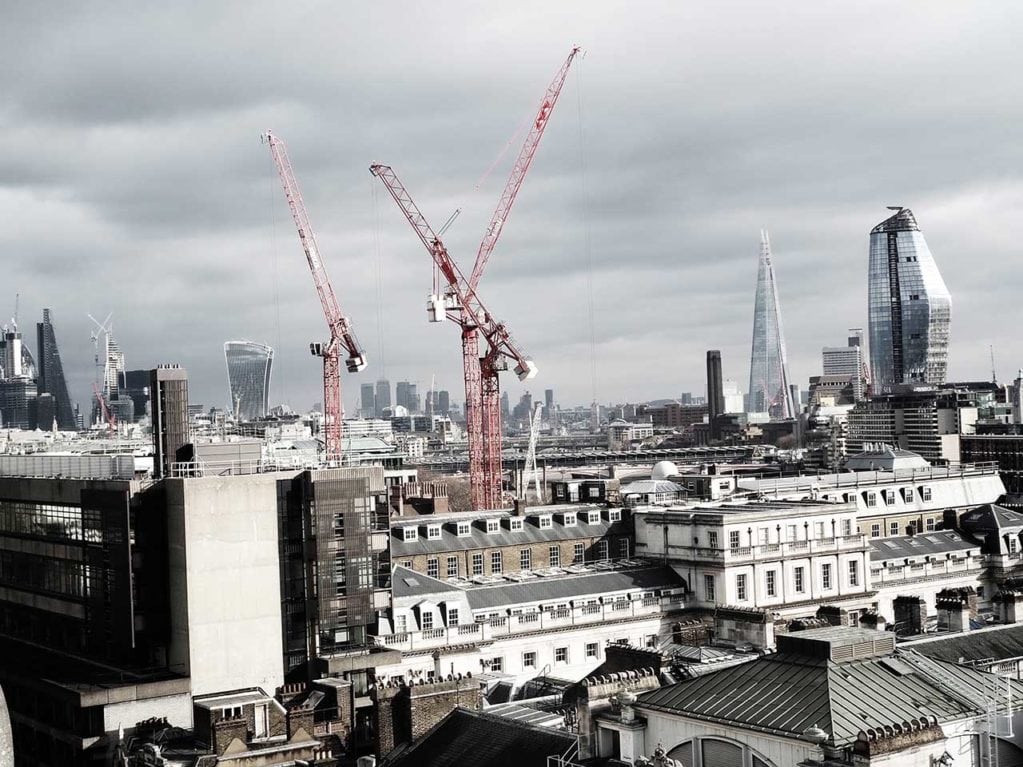
The PEN E-PL9’s new Bleach Bypass filter
The E-PL9 is quite capable in low light too, offering clean exposures up to about ISO 800. But unless you’re making large prints, images are usable at much higher ISOs.
I happily posted images I shot at ISO 6400, which bore some luminance noise but were otherwise great!

Shot on the E-PL9 at ISO 6400
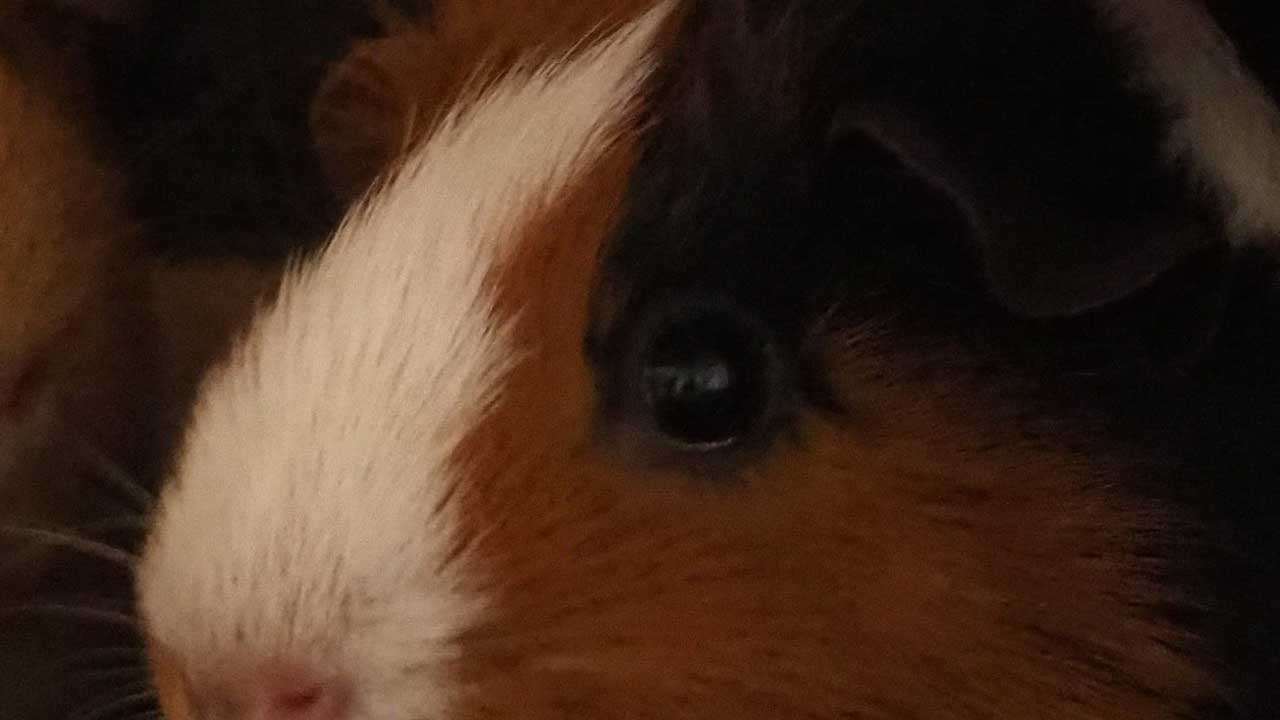
The same image cropped in at 100%
I was also very impressed with the E-PL9’s 121-point AF system. Whether it was my dog racing across the beach in tracking mode or my son stood against a busy background, the E-PL9 performed well and found my target every time.
Dynamic range was a bit of an issue. Some images in some conditions were a little flat or dark. But if you can recognise these shooting conditions and enable the camera’s HDR mode, then you should have no issues.
I also found the camera’s built-in 3-axis image stabilisation a real asset for shooting in low light. Shooting in that dark guinea pig cage above, for instance, I was able to get some pretty sharp shots.
The 3-axis stabilisation is also great for video and adds to the E-PL9’s vlogger appeal. If you watch my sample vlog test video it looks really stable. When in actuality, because I was hand-holding the camera and on my third or so take, my arm was wobbling all over the place.
Olympus E-PL9 sample photos


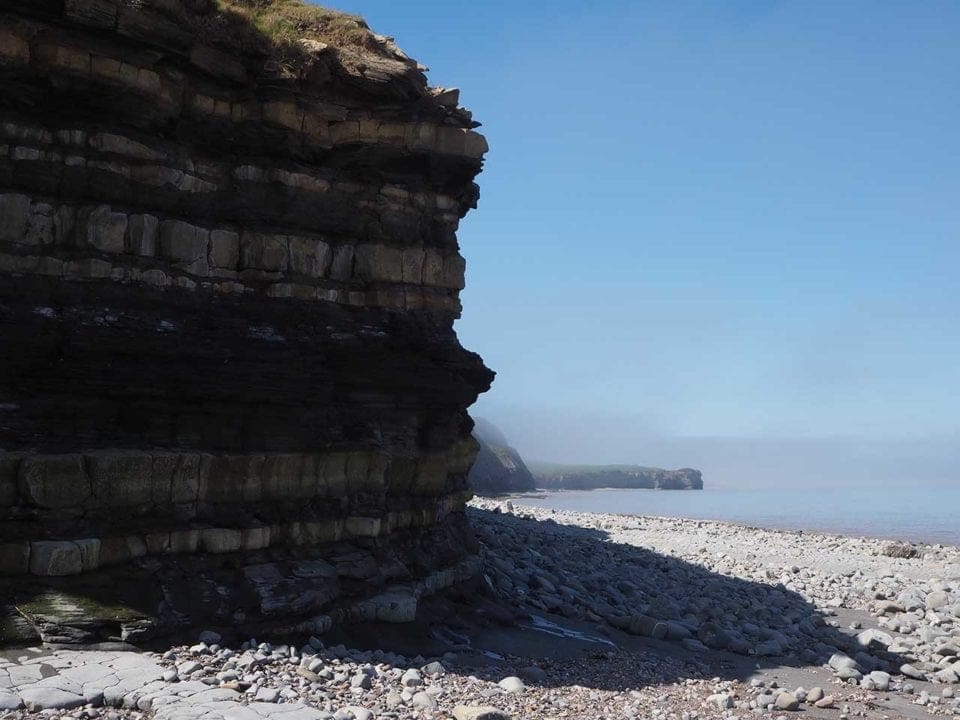

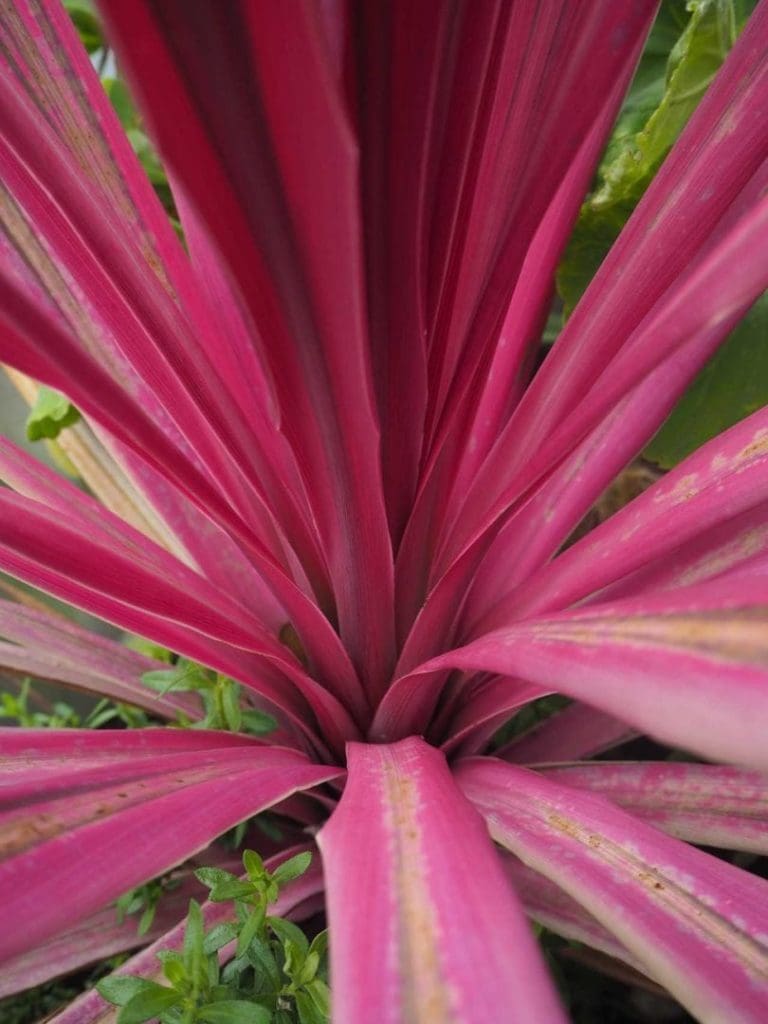
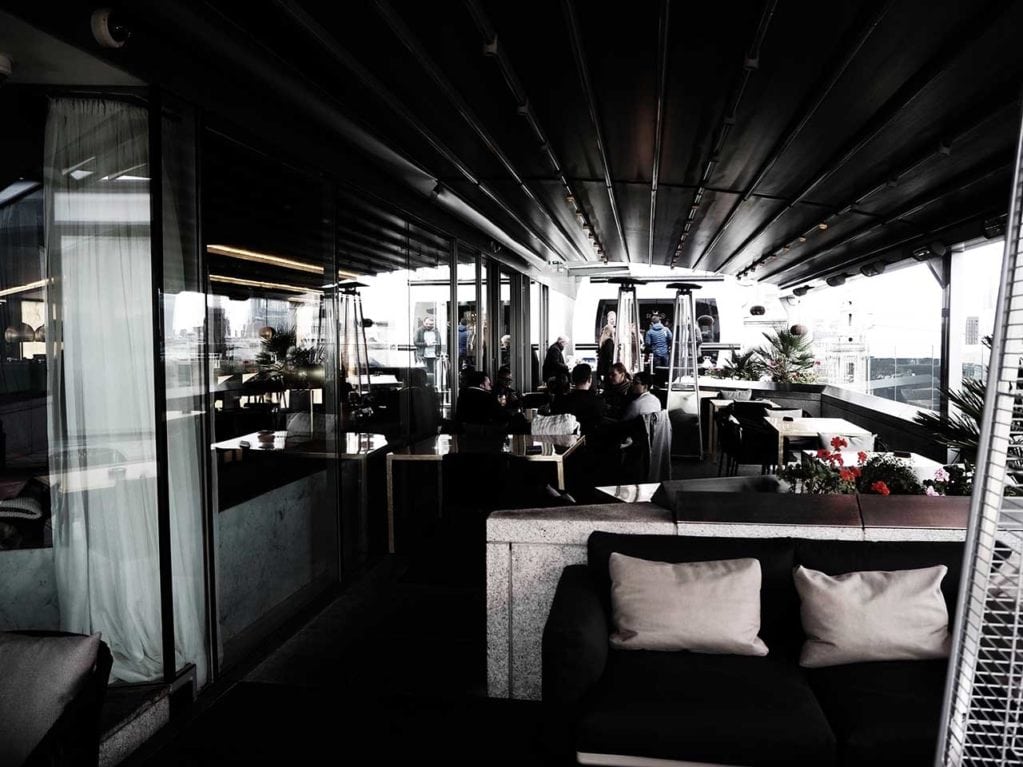


[FAG id=62483]
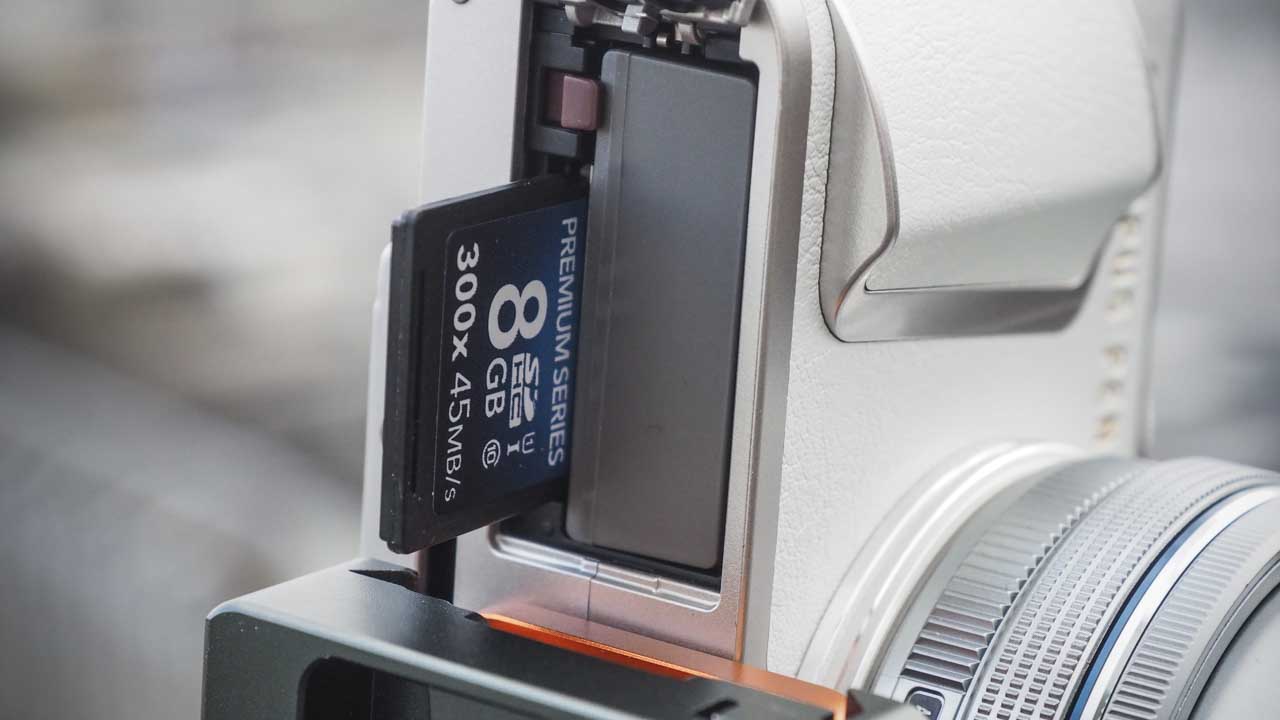
Verdict
As I said earlier in this review, my first impressions before using the PEN E-PL9 were somewhat sceptical. I saw the missing accessory port (and thus lack of any external mic), a smaller sensor with fewer megapixels than some of its competitors, and I wasn’t quite sure who this camera was aimed at. And at £579, its price tag isn’t quite at the budget end.
But as you use the PEN E-PL9 regularly, it really makes sense. It is indeed aimed at those who want a step up from their smartphones and fills this gap remarkably well by embracing the things that smartphones do well, and doing them better.
Bluetooth connectivity, for instance. And double tap to select is simple and very similar to the interaction you have with a smartphone.
The E-PL9’s controls really couldn’t be more straightforward. It’s clear that its design is intended to keep the fun in photography (some might feel bring it back).
The few megapixels difference from its rivals doesn’t matter. The PEN E-PL9 delivers great shots. Video quality is equally impressive, and the audio is surprisingly good. It would still be handy to have the option of using an external mic, though. And it does really come back to that, I think.
The E-PL9 is a good beginner vlogging camera – if you handhold it you are close enough for the onboard mic, which appears to be front-sensitive to always capture your voice over anything else. But the lack of the mic port will limit how much you can grow with the PEN E-PL9 as a videographer.
As a stills camera, though, you have plenty of amazing features at your disposal and can learn and grow with the E-PL9 for some time.
Should you buy the Olympus PEN E-PL9?
The question comes down to whether you want it for vlogging or as a camera to learn and grow with.
If you simply want an interchangeable lens camera – a quote unquote serious camera – that’s easy to use, has a great AF system and produces beautiful exposures, the PEN E-PL9 presents some of the best value available. Get it. Don’t hesitate.
If vlogging is your thing and you have ambitions at being a YouTuber, I’d say the grip issue might annoy you after a while and you’ll eventually want to record something more complex and will wish you had that mic port.
But if you want a camera that allows you to record spontaneous movies for sharing, much like you would with your smartphone but with better quality and more control, the PEN E-PL9 shines.
